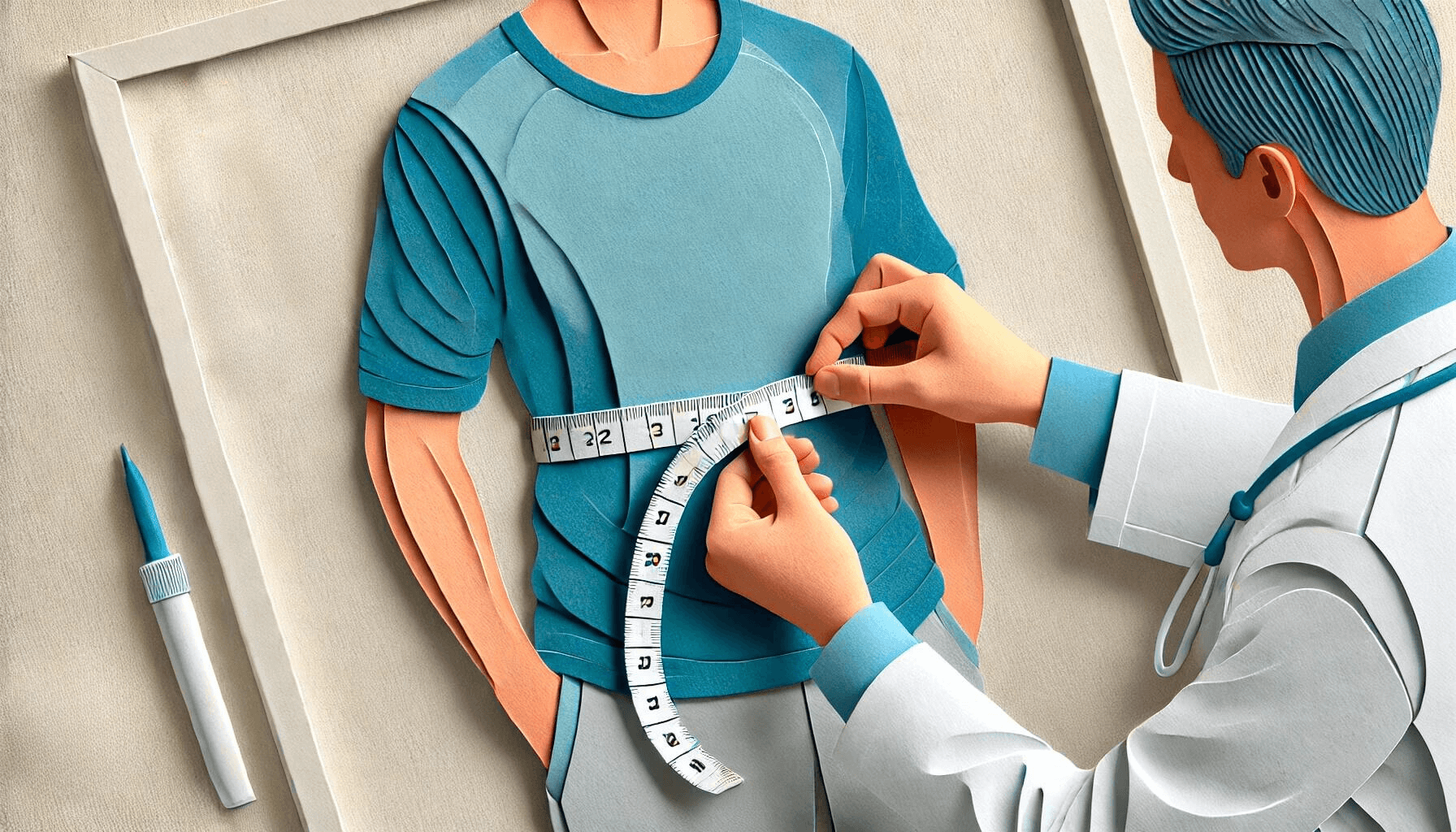
Carrying too much weight can lead to other serious health problems, including heart disease and Type 2 Diabetes. This makes losing weight important as it can improve these conditions.
If you struggle to lose weight over the long term through lifestyle changes, weight loss surgery may be an alternative.
Weight Loss Procedures
There are three surgical weight loss options in Australia:
- Gastric band surgery
- Sleeve gastrectomy surgery
- Gastric bypass surgery.
1. Gastric Band Surgery
Gastric band surgery is not as popular as it was because the weight loss achieved is not as good when compared to other procedures. This does not mean that it cannot help you to successfully lose weight.
The gastric band is a soft silicone and has an inflatable balloon that attaches to a tube and access port secured to your upper abdominal wall just below the skin. The balloon contains fluid to help you feel full.
Using keyhole surgery, your specialist plastic surgeon positions the band around the upper part of your stomach and creates a small pouch above the band that holds around 20 ml of food.
There is no need for further surgery to access the band to adjust it. Your doctor accesses the port with a non-coring needle to regulate the amount of liquid in the balloon.
You will gradually lose weight as the pouch restricts the amount of food your stomach can hold at any time.
2. Sleeve Gastrectomy Surgery
During sleeve gastrectomy surgery, also known as gastric sleeve surgery, your surgeon creates a vertical sleeve using a stapling device. The surgeon completes the procedure using keyhole surgery. It reduces how much your stomach holds from about 2 litres down to around 150 ml.
The part of the stomach removed is the part that produces the hormones responsible for how you respond to food. This can change your food preferences and appetite.
Stille Enjoy Food but Eat Less
You will still enjoy eating but not feel so hungry. After surgery you will be able to:
- Eat less.The gastric sleeve allows you to feel satisfied while eating smaller meals and, because your stomach is smaller, you do not overeat.
- Control your hunger.While a gastric sleeve means your stomach has less capacity for food, it also changes your biochemical reaction to food which alters your appetite to control your hunger.
- Make better choices.A gastric sleeve changes the way your stomach deals with foods loaded with sugar and fats so you will not really want to eat them. This means it is easy to choose to eat healthier foods.
- Changing metabolism.The gastric sleeve changes how your metabolism operates and regulates your appetite.
Potential Benefits
A gastric sleeve is on of the most effective obesity treatments. Some of the potential benefits include:
- Losing more weight than if you have a gastric band and about the same weight as having a gastric bypass but the risk of complications with a gastric sleeve are lower.
- Helping you to quickly manage with Type 2 Diabetes.
- Fewer follow-up appointments than with a gastric band.
- Lower risk of complications after a gastric bypass.
- Less risk of nutritional deficiencies than after a gastric bypass so there is no need for frequent monitoring.
Potential Disadvantages
Potential disadvantages include:
- You are less likely to develop complications but, if you do, they can be difficult to fix.
- In a small amount of people there is the risk of a staple leak. It is crucial to detect the condition early for a good recovery.
- If you have severe heartburn or reflux, this procedure may not control these conditions.
3. Gastric Bypass Surgery
Gastric bypass surgery alters how food travels from the stomach to the small bowel. Your surgeon creates a small pouch at the top of your stomach using staples and attaches it to the bottom of your small intestine. Food bypasses the first section of the small intestine and reduces how you absorb calories and nutrients, and how much food you can eat.
There are two types of gastric bypass surgeries:
- Roux-en-Y gastric bypass surgery (RYGB)
- Mini gastric bypass (MGB).
Benefits of a Roux-en-Y Gastric Bypass
The benefits of an RGB include:
- Managing reflux.If you have severe reflux, then an RGB can be the best weight loss surgery option.
- Effective weight loss.An RGB is one of the most effective weight loss surgeries. You can potentially lose more weight than if you have a gastric sleeve or band.
- Helping resolve health issues.It can help to resolve health issues related to obesity such as Type 2 Diabetes.
Disadvantages of a Roux-en-Y Gastric Bypass
The disadvantages of an RGB include:
- Complex procedure.The RGB is a more complex procedure than the MGB, sleeve gastrectomy or a gastric band.
- Higher risk of complications.It has a higher risk of complications so you need close monitoring to detect and manage these if they develop.
- Potential side effects.There is a risk of developing side effects such as a peptic ulcer or a bowel hernia.
Benefits of a Mini Gastric Bypass
Benefits of an MGB include:
- Not as complex surgery as an RGB which reduces the risk of a staple leak or bowel hernia.
- Also has good results controlling Type 2 Diabetes.
- Has similar results to an RGB but the operation takes less time to perform.
Disadvantages of a Mini Gastric Bypass
Disadvantages of an MGB include:
- Greater risk of mineral and vitamin deficiencies.
- Higher risk of serious side effects because of persistent bile reflux but because this is a new procedure, there is no long-term data available.
When looking for weight loss surgery Sydney, give us a call to book a consultation. Our specialist plastic surgeons can give you the information you need to make the best decision to suit your circumstances.




